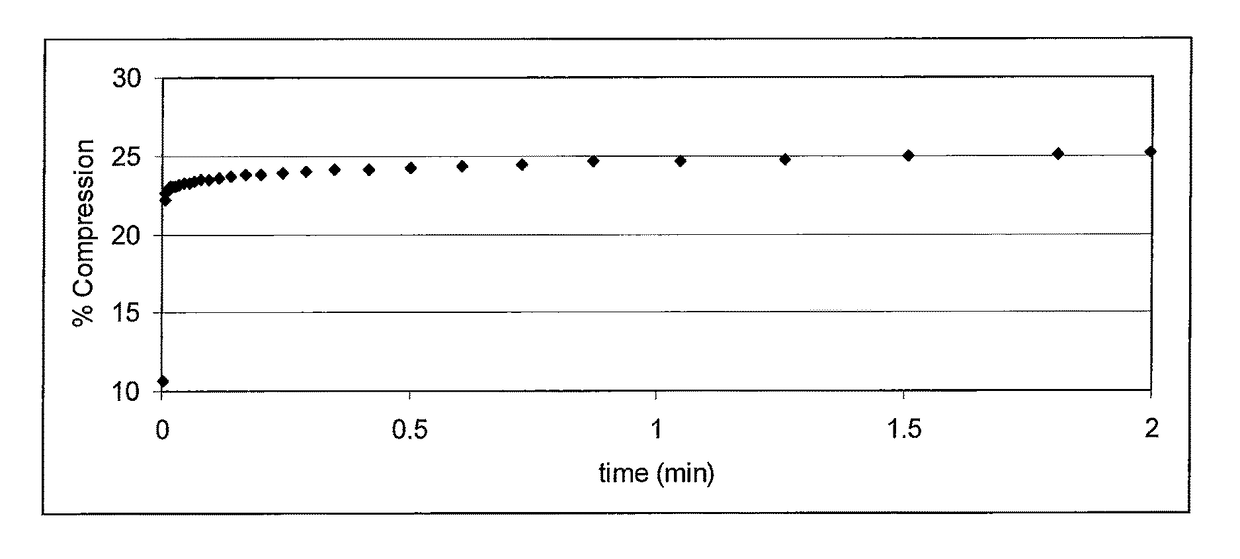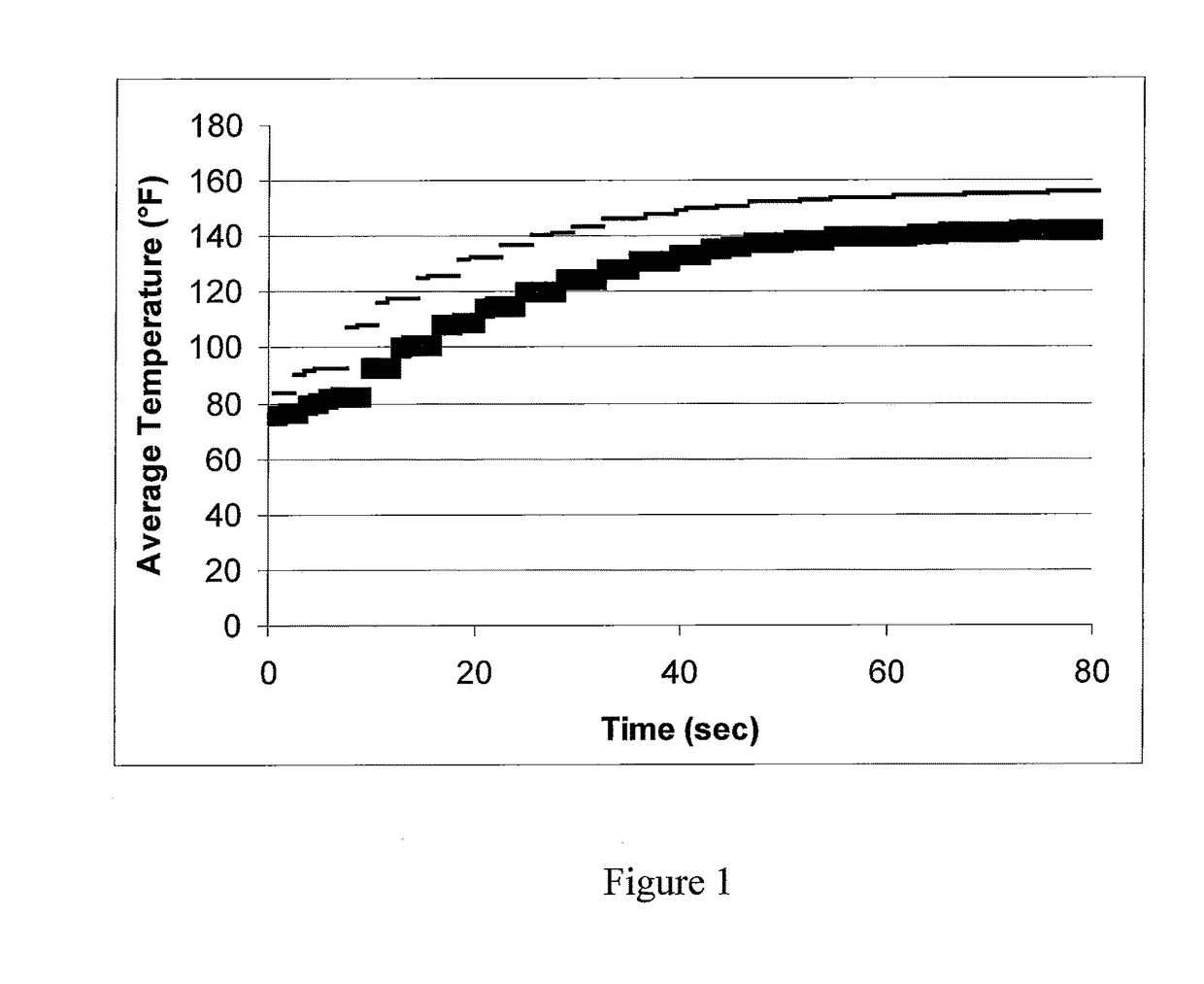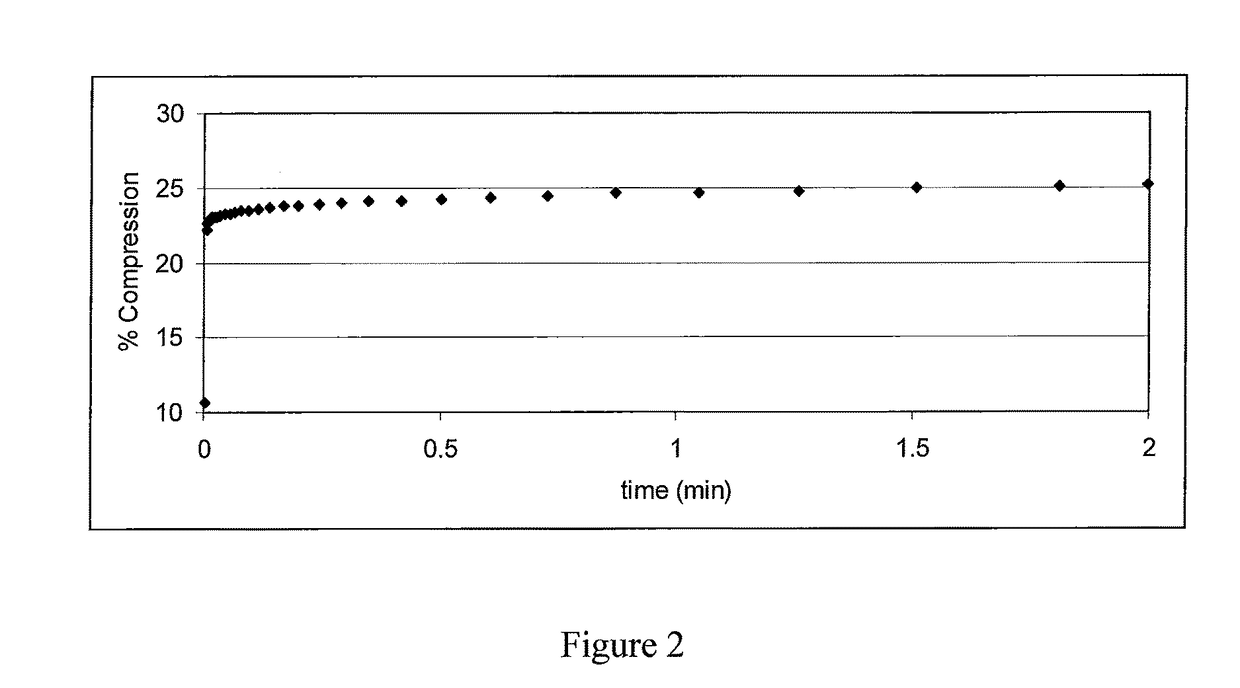Adhesive for insulative articles
a technology of adhesive composition and insulative articles, which is applied in the field of adhesive composition for insulative articles, can solve the problems of increasing cost, increasing carbon footprint, and negative impact on the environment, and achieve the effect of expanding the composition
- Summary
- Abstract
- Description
- Claims
- Application Information
AI Technical Summary
Benefits of technology
Problems solved by technology
Method used
Image
Examples
example 1
odulus, Absolute (log(E / T) Slope and Tan Delta of Water-Based Resin Emulsions
[0046]All reported measurements were conducted in accordance with ASTM D5026.
[0047]
Water-Water-Water-Comparisonbased resinbased resinbased resinwater-basedemulsion 1emulsion 2emulsion 3resin emulsionTemperatureE′E′E′E′(° C.)(MPa)tan d(MPa)tan d(MPa)tan d(MPa)tan d706.980.625529.630.5135480.830.14700.740.5821755.040.579821.080.4559438.340.12210.620.5930803.220.565113.730.4541393.430.10860.510.5988852.060.53798.540.4891364.100.11090.450.6050901.460.49094.970.5407334.710.11920.380.6140951.130.44392.830.5785305.210.13130.320.63191000.920.40631.680.5784256.500.19360.250.65991050.770.37971.090.55140.180.69471100.640.35930.750.52000.110.7232absolute0.02700.04290.00800.0177(log(E) / T)slope in 70-100° C.
Example 2—Formation of an Adhesive
[0048]Adhesive compositions were prepared having the following composition.
[0049]
TABLE 1ABComparisonComponentComponent(wt %)(wt %)(wt %)Water-based resin(i)an elastic modulus greater9...
example 2
e Properties
[0051]The composite cup was tested for the insulative properties with Adhesive Sample A. On an open ring, two thermocouples (Digi-Sense, Type J) were placed at opposite sides, and the cup was configured in the ring so that only the two thermocouples rested on the surface of the cup. Two compressible foams were also placed on the other side of the thermocouple to mimic pressure on the point of contact. Water, at 190.25° F., was poured into the composite cup and the thermocouple temperatures were recorded. An average of the thermocouple readings, at 5 second intervals are shown Table 2, and the entire temperature plot against time is shown in FIG. 1.
[0052]
TABLE 2timeComparative Composite (° F.)Composite (° F.)(second)Thin lineThicker line591.8579.9510107.4591.8515124.35100.5520132.05108.1025136.40119.1530142.90124.2035146.25127.7040149.35132.8045150.60135.5050151.95137.1055153.35139.1560153.60139.7065154.50140.4070154.90141.2575155.10141.3580155.40141.65
[0053]As shown in T...
example 3
l Integrity
[0054]The expanded adhesive provided structural integrity in the composite during a hot compression test. Three beads (size 2.4 mm diameter) of Sample A were applied in between two substrates, and then expanded by microwave heating. In accordance with ASTM method D5024, the composite was then compressed at 191° F. with a force of 2 psi for 2 minutes. The results of the percent compression are shown in Table 3 and FIG. 2.
[0055]
TABLE 3time (min)% Compression0.000.100.1023.500.2023.800.2924.000.4224.100.5024.200.6124.300.7324.400.8724.601.0524.701.2624.801.5125.001.8125.102.0025.20
[0056]The composite with the adhesive is able to maintain greater than 70%, and even greater than 75% of the original height (separation) during the hot compression test. Furthermore, the adhesive can provides this structural integrity to the composite throughout the entire two minutes.
PUM
| Property | Measurement | Unit |
|---|---|---|
| temperature | aaaaa | aaaaa |
| elastic modulus | aaaaa | aaaaa |
| temperature | aaaaa | aaaaa |
Abstract
Description
Claims
Application Information
 Login to View More
Login to View More - R&D
- Intellectual Property
- Life Sciences
- Materials
- Tech Scout
- Unparalleled Data Quality
- Higher Quality Content
- 60% Fewer Hallucinations
Browse by: Latest US Patents, China's latest patents, Technical Efficacy Thesaurus, Application Domain, Technology Topic, Popular Technical Reports.
© 2025 PatSnap. All rights reserved.Legal|Privacy policy|Modern Slavery Act Transparency Statement|Sitemap|About US| Contact US: help@patsnap.com



